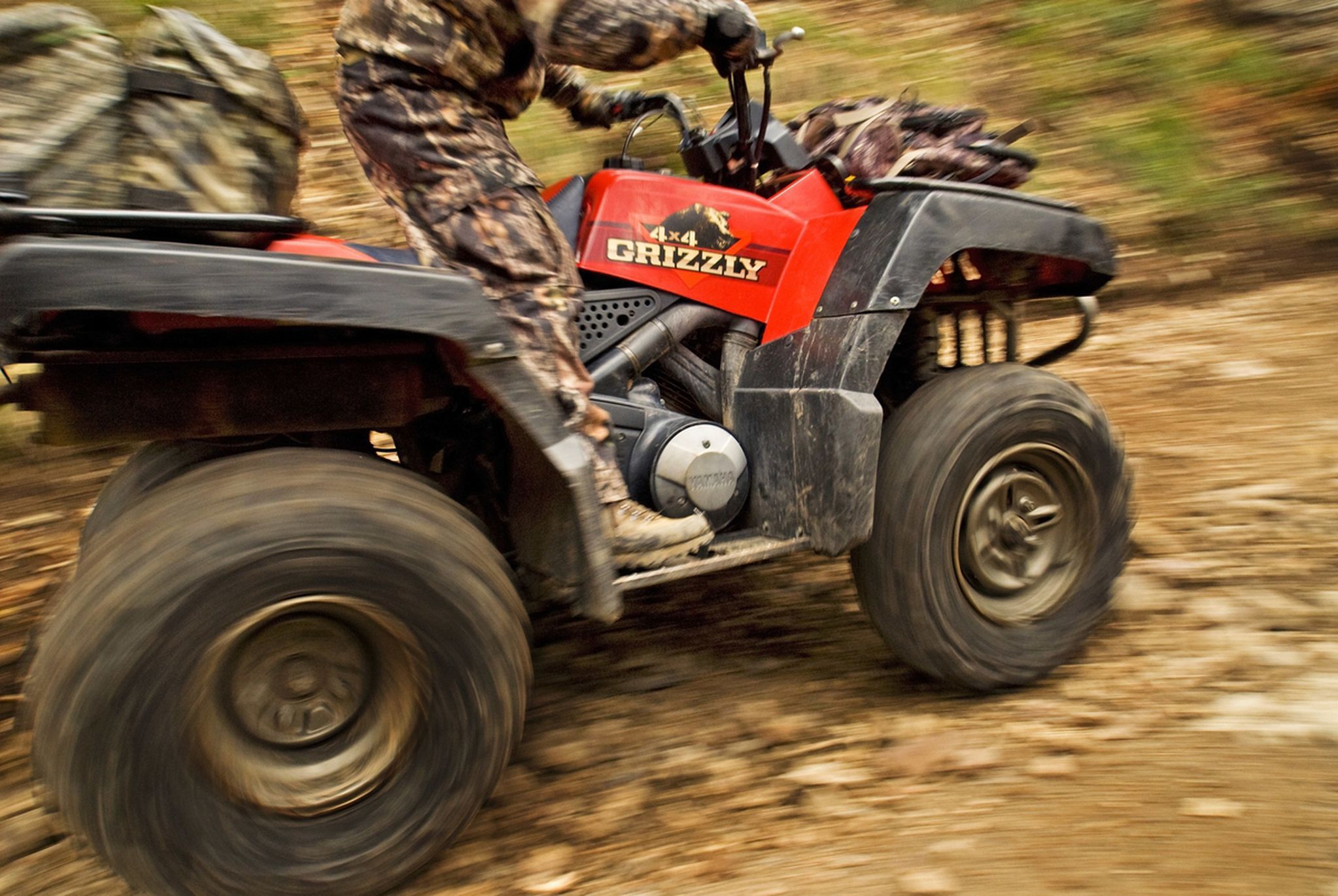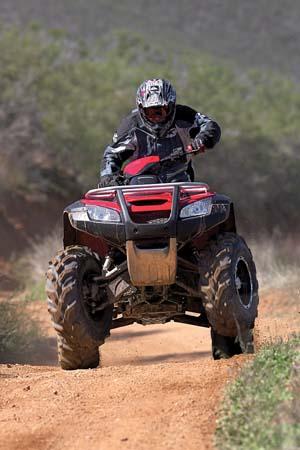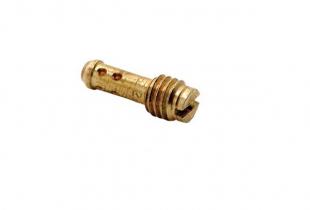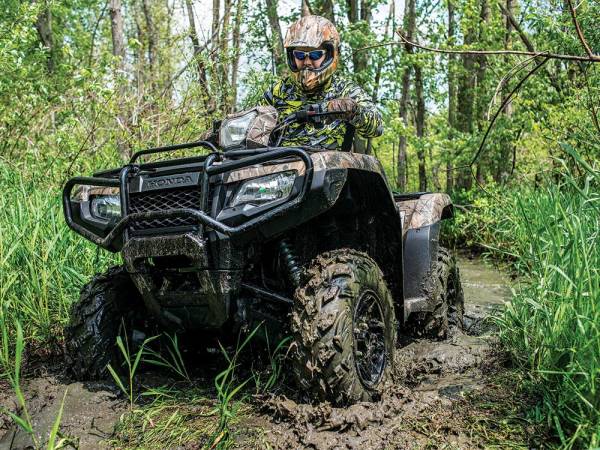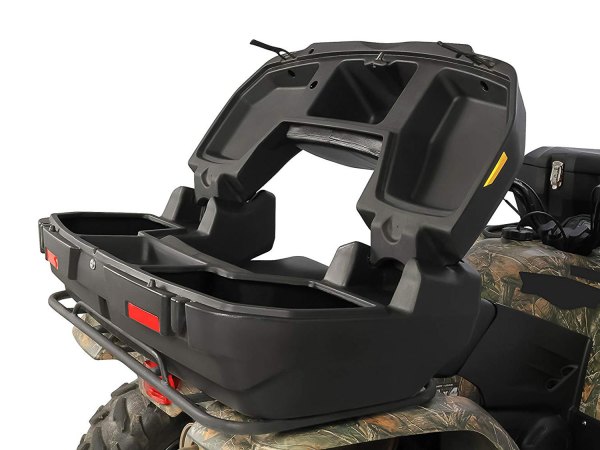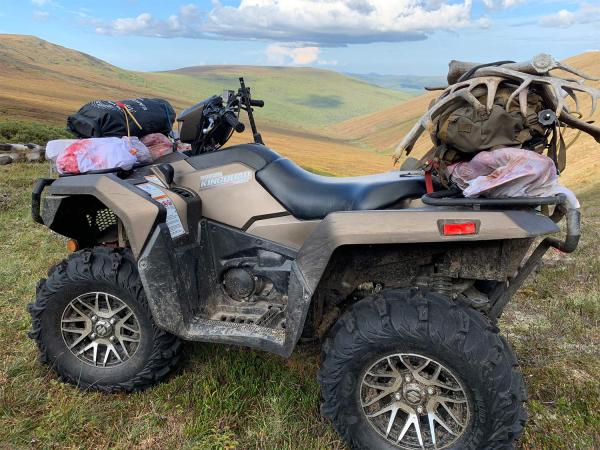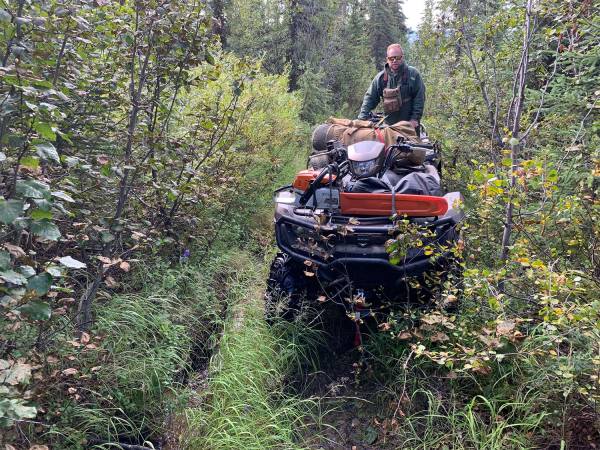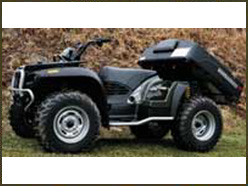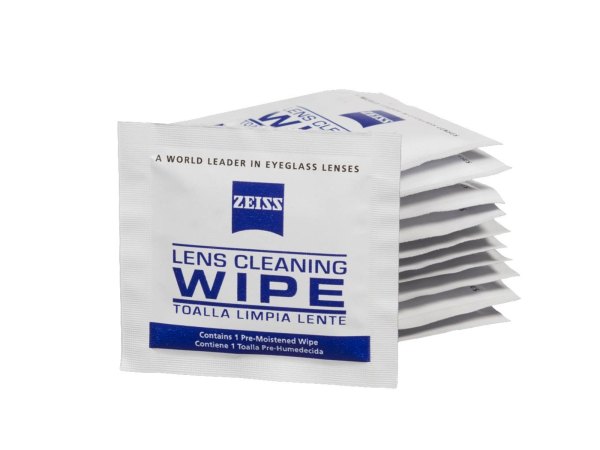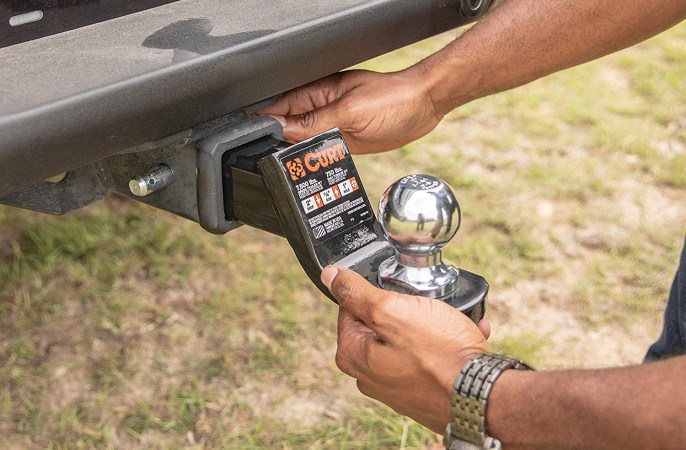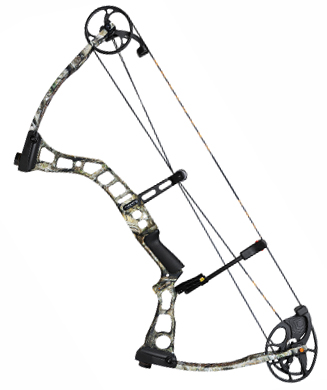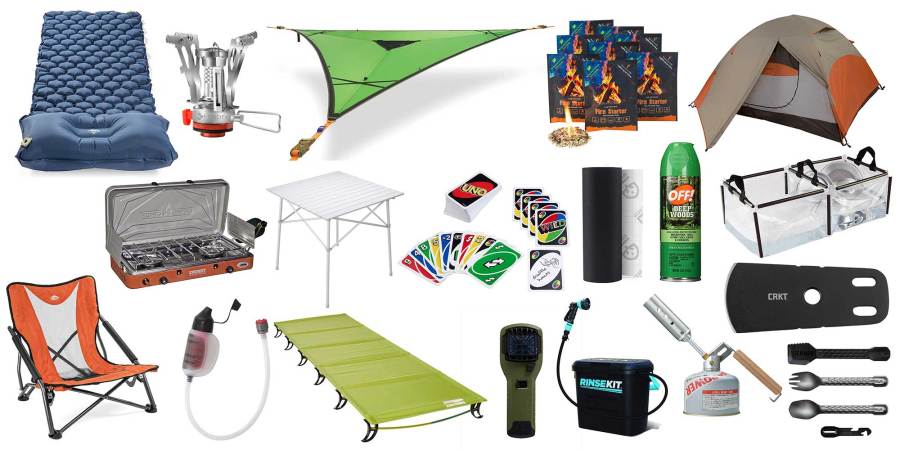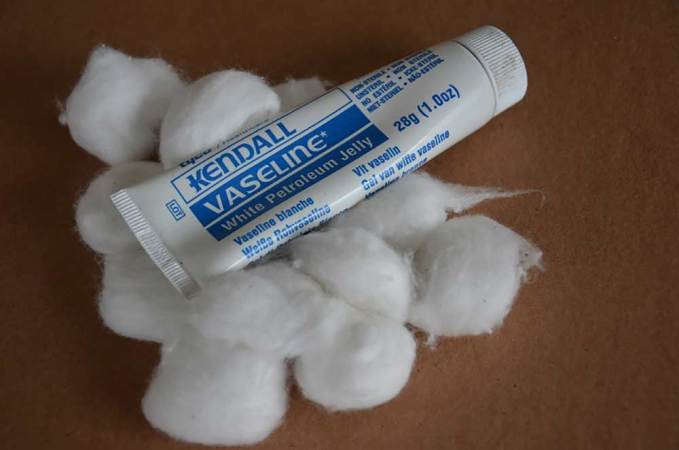We may earn revenue from the products available on this page and participate in affiliate programs. Learn More ›
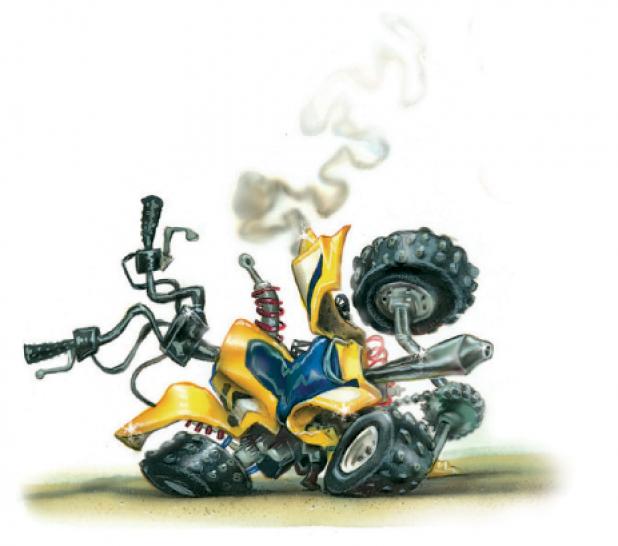
Some of the ways to ruin your quad take some work (like crashing), but some of the easiest ways to ruin your quad are quite simple (and you might be doing them right now!). From neglecting minor maintenance issues to learning the hard way that your quad isn’t a great swimmer or immune to the laws of gravity, here are 10 quick and easy ways to ruin your quad. And, of course, how to fix them.
1. Never Clean The Air Filter
Raise your hand if you’ve ever said, “I never change the air filter on my quad because I have better things to do like losing horsepower and quietly ruining my ATV’s engine! Maintenance is for suckers!”
Your quad’s air filter needs to be cleaned regularly. Why? Because running an engine with a dirty air filter is one of the easiest ways to ruin your machine. Sucking dirt particles into the engine will, over time, wear out the engine and can do some serious damage. Here’s the basic break down: an engine needs both fuel and air to produce power. When the air filter is dirty, it can no longer keep dirt from getting sucked into the engine. When dirt particles start invading the inner chambers of your quad’s powerplant, it won’t run as well as it should, which results in horsepower loss and interior damage to the engine, which can easily be fixed by buying a new engine (if that’s what you’re into).
Clean the air filter before riding season begins if you’re a casual rider, and clean it after a really nasty dirty ride if you’re a frequent off-roader. If you ride in the dunes, you might have to clean the air filter more than ONCE A DAY. Did you hear that? ‘Cause we’re yelling it! Here’s a good rule of thumb: if you face has dirt on it after a ride, check the air filter in your quad. If it’s dirty, clean it!
Maybe right now is a good time to turn off the computer and get so cleaning or replacing your quad’s air filter. Something so simple (it takes all of 10 minutes and not a whole lot of money) makes a big difference in how your quad runs, and for how long it’ll keep running in the years to come.
2. Never Change The Oil
Smack yourself if you’ve ever said: “Changing oil is for jerks, and I always say that if there’s oil in the engine it’s all good. I know for a fact that a magical grease monkey visits my quad in the garage and cleans the goop out of the oil so I never have to change it.”
This works much like the air filter tip, and because we love to yell, we’re going to scream this: CHANGE YOUR QUAD’S OIL ONCE IN A WHILE, WOULD YA? Sheesh. Just like the air filter, oil collects junk and gunk. From little metal shavings from engine wear to dirt and debris, the oil is a breeding ground for a break down. And if you’re playing in puddles with your quad, you might have a nice little water and oil mixture going on there, and you know what they say about oil and water: they don’t mix. So, at the end of your riding season (if you’re a seasonal rider), replace the oil. Or, you can do it in the spring (but we prefer our quads to have fresh oil in their bellies while they wait out winter). If you ride your machine in the cold months, change the oil to the appropriate weight for colder temperatures. And in the heat of the riding season, change the oil if you get in too deep with a body of water or a mud pit. If you’re racing your quad, it’s not unreasonable to change the oil after every race. Basically, the point we’re trying to get across here is change the oil in your quad at least once a year, and do it more frequently if you’re a frequent rider.
The good news is that putting fresh, clean oil in your quad is one of the easiest maintenance routines to perform. Get a few quarts of ATV engine oil, drain the old stuff, and put new oil in. See? It’s so easy it took us only one sentence to explain what to do. But please, for the love of all things good and great, don’t dump the contaminated old oil down a drain, a sewer, or into your yard. If you do, we’ll be forced to come to your house with a rolled up newspaper and smack you on the nose. Take the old oil to a recycling center, like a repair shop. Most places will take your dirty oil and recycle it for free! The environment will thank you, and you’ll save yourself a swat with a rolled up newspaper and the embarrassment of us publishing photos of you getting scolded. DON’T MAKE US COME OVER THERE.
3. Never Tighten the Bolts
Holler if you’ve ever stated, “If bolts need a written invitation to stay where they’re supposed to, then I don’t really need ’em! Let them fall off!”
We know a lot of riders who live by the motto, “Run it ’til the wheels fall off.” And you know what? It’s more likely than you think! You can’t “pin it to win it” if stuff (especially important stuff like a wheel) is separating from your machine. Would it kill you to grab a torque wrench or a socket once in a while and check that all the bolts on your machine are tight? We asked a few doctors, and the consensus is no, in fact, it will not kill you to tighten a couple of bolts. No more excuses.
Here is a list of bolts you should be touching, tightening, and torquing on a regular basis:
* Lug nuts: They need to be properly torqued. You don’t want your four-wheeler turning into an impromptu three- or two-wheeler.
* Pivot bolt: This bolt holds the swingarm to the frame, so if even with a basic understanding of mechanics, you’ll know that it is important. A loose pivot bolt can wear out the frame and also ruin the bearings.
* Axle nut: Make sure the axle nut is properly tightened; a loose axle will wear out bearings and possibly destroy the axle carrier.
* Wheel hubs: Loose front hubs will wear out your quad’s bearings. Loose rear hubs will eventually strip axle and hub splines. This all will create more down time and work for you.
* Skid plate bolts: If you have a skid plate on your machine, check the bolts that hold it in place. Constant battering almost always loosens these bolts (and you don’t want to lose a $100-plus skid plate).
* Sprocket bolt: Constant chain torque eventually will loosen this bolt.
4. Submerge It
Water is important for the life of most things, but it could shorten the life of your quad; especially if you decide to try your quad out as a submarine (which it most definitely is not). Sinking, submerging, and sucking moisture (whether water or mud) is a quick way get water in the engine, gasoline, and oil, which will do wonders for your quad…like “I wonder why it’s not working?” Are you confused as to what to do if your quad has spent more time floating than rolling lately? Here are a few hints.
First of all, if you’ve sucked water, get your machine onto dry land and don’t try to start it! Tip your quad on its back end (on the grab bar) to drain some of the excess water out of the exhaust pipe. Then pull the spark plug out and crank it over with plug out to blow water out of the cylinder. If you have a belt-driven transmission (a quad without a chain), there should a plug at the bottom of the belt cover that you can pull to drain the water out once the quad is back down on its wheels. Also, open the air box (if it’s located behind the carburetor) and then pull the filter out. If it’s wet, do your best to dry it out.
If you can get your machine running again, don’t push your luck by keeping the ride alive. Your day of riding is over, man! It’s important to get it back home to the garage as soon as possible after a “bath.” When you get back to your garage, you’ll have to clean the airboot, change the oil, clean the air filter, and clean the carburetor out. Water sloshing around in any of these parts will mean certain doom for your machine in the near future. Regrease the zirks and anything else that needs attention (use waterproof grease if you liked dunking your quad so much the first time that you’re considering doing it again). Another great tool for cleaning up after a water landing is WD-40. The WD stands for “water displacement (for real!) and it will push water out of the machine.
5. Crash It
There are two rules we’ve tested time and time again: gravity and Murphy’s Law. We haven’t beaten either one yet. Trying to climb a steep hill, flipping your machine over, running your quad into a tree or rock, bending stuff that’s not supposed to be bent, puncturing things that aren’t supposed to be punctured, and breaking stuff in general does not bode well for the longevity of your quad. Surprised? Really? If you’ve crashed your machine, there are a few basics you should check out before riding again. First of all, make sure all your limbs work. Then check all the controls on your quad: make sure the throttle, brake, clutch, and shifter all work without binding. Next check out the tires and wheels: If there’s dirt in the bead or punctures in the tires that you can’t patch, then you know you’ll have to get back to your truck or trailer ASAP. If everything looks OK so far, straddle each tire with your legs and hold them tight while you twist the handlebars. This will tell you if there’s too much slop in the steering, and if there is, you need to ride very carefully back to your base camp. All those tests show no problems? Then start it up and make sure the throttle operates properly before taking off.
When you get back home, you’ll have to do a more in-depth checkup on your quad. While cracked plastics might not look great, they’re not essential to the function of your quad…but, if you’ve got a leaking gas tank, well, that’s another story. Check for obvious cracks or stress or paint chips where the frame was stressed. These could be the start of a bigger problem. Riding a quad with a broken frame is really not fun, so keep an eye on stress spots. Next up, check to see if anything is obviously bent, and make sure the quad rides straight. And now’s probably a good time to check all the bolts that we mention in #3, as well.
6. Never Wash It
A dirty quad is a playground for lurking problems. Regardless of the amount and/or the velocity of the precipitation falling from the sky, rain is not an appropriate substitute for a good wash with some soap and water at the local car wash or in your back yard. And we’re not talking about just washing the parts of your quad that everyone can see. We’re talking about the deep-down, hidden, machine-eroding dirt that cakes underneath, in between, and everywhere it shouldn’t be. You may ask yourself how leaving dirt on your quad can ruin it, but trust us, it can and will!
Scrub the top, the sides, and don’t be afraid to reach underneath and clean that undercarriage. If it helps, you can roll your quad halfway up onto the ramps you use to load it into your truck bed
7. Never Grease It
Repeat after us: Grease is good. Grease is great. Grease is better on your quad than on your plate. Well, they’re both equally good, but different kinds of grease. After you’ve put down that chicken wing, let’s get down to business greasing the pivots and bearings on your quad. They like grease even more that you do (if that’s possible!).
Grease:
Pivot bolt
Carrier bearings (axle)
Steering stem bushing
A-arm bushings or bearings
Front hub bearings
8. Let the Fuel Go Bad
Think of gasoline like a gallon of milk. The same way milk will last a couple of weeks in the fridge, fuel will stay fresh in your quad for a couple of weeks. But, you wouldn’t let a jug of milk sit for six months and then try to have a bowl of cereal with it, would you? The same principal applies to gasoline. Fuel goes bad. It really does! This is not just some scare tactic employed by the oil companies to get more money out of you. Gasoline breaks down over time and it can take your quad down with it. It can clog up carburetors and fuel lines, and you’ll be left with a sputtering mess that konks out every time you blip the throttle. That doesn’t sound like fun, does it?
If you’re going to leave your quad to rest peacefully in the winter months, or if you’re just going to be too busy to ride your machine for a while, prep the gasoline in your quad’s tank. Either drain the tank completely (run it ’til it’s dry if it’s got a carburetor) or put a fuel additive in the tank to keep the fuel from going bad. If you choose to put an additive in the tank, make sure you clean out the fuel from the line and the carburetor. The easiest way to do that is turn the fuel tank selector to “off” and let your quad run. This will use all the fuel in the fuel line and in the float bowls of the carburetor, making sure there’s not fuel left over that can go bad and gum up your machine. Make sure you do this out in the open though…trying this in a closed-off garage could equal one mean headache and a unplanned trip to the hospital.
9. Ride With A Clogged Radiator
Been mudding? Been riding in the woods? The sand? Anywhere at all? A lot of different types of terrain can be rough on your quad’s radiator. And if the radiator isn’t working correctly, shortly thereafter your engine won’t be working too swiftly either. Here’s a simple equation to demonstrate what we mean: crud (crap and mud) + radiator = overheated engine. How many rides are you going to get in with an overheated engine? Exactly zero.
If you’ve been mudding, splashing in puddles, or riding through wet terrain (even if it doesn’t seem that treacherous), your quad’s radiator could be operating at a diminished capacity. You need to clean that crap out! To fully clean your radiator, go ahead and make your pressure washer put some pressure on it. A good rule of thumb we’ve learned from our mud-bogging friends is if you pressure wash the radiator and water splashes back at you, then the radiator isn’t clean yet. The water should flow through the radiator without splashing back when it’s clean. And when it’s clean, it’s keeping your engine cool. And when you’re engine’s cool, you’re in business.
10. Half-Assed Modifications
Dude, seriously? Did you just put a pipe on your quad and not rejet it? Lame! There are a lot of things you can accomplish in life by half-assing it, but mods to your machine are not among those things. Do it right the first time, and you won’t have to worry about it again. So, anything you add or change on your quad that affects the power it produces or the way it runs should be done properly (duh) and with the right adjustments. For instance, if you’re outfitting your quad with a new pipe, you need to make allowances for the added horsepower by either rejetting it (if you have a carbureted machine) or getting a new fuel map (if you have a fuel-injected quad). ––Cassandra
Critical ATV and UTV Care for Longer Vehicle Life
Once you’ve spent your hard-earned money on an ATV or SXS, you want to be sure you take care of it. Here are a few random tips to help you preserve your investment. Getting to know every part of your hunting rig is important, and even if you’re not the one doing the maintenance on your machine, you need to know how the terrain and riding conditions impact the health of your ride.
1. Air Filters
The air filter on your machine is the breathing inlet for the motor. If the air filter gets clogged, the amount of air is reduced and the machine will run rich. This means more fuel than air is entering the engine and you stand a chance of fouling the spark plug. The sealing surface of your air filter is subject to leaking, and making sure the filter is properly seated in the housing is critical to clean air entering the engine. Even fine dust can wear on the engine’s internals and will eventually kill your investment.
2. Belts
Belt driven machines are more common today than in years past. The belt that puts the power from the motor to the transmission needs to stay dry and cool. If you ride in deep water and the transmission slips, be sure to first remove the machine from the water and then drain the CVT box. Most newer belt drives have drains on the bottom rear of the CVT box. A wet belt slips and will burn wear spots on the sides of the belt. This will eventually lead to belt failure.
3. Axle Boots
CV axle boots are subject to many obstacles along the trail. These boots protect the constant velocity joints for the front and rear axles on independent suspension machines. If these boots get torn, you will eventually ruin the joint. Mud, water, and trail trash will find their way into the joint and grind it to pieces. Always keep an eye on the axles and boots to prevent unexpected damage. ––Rick Sosebee
